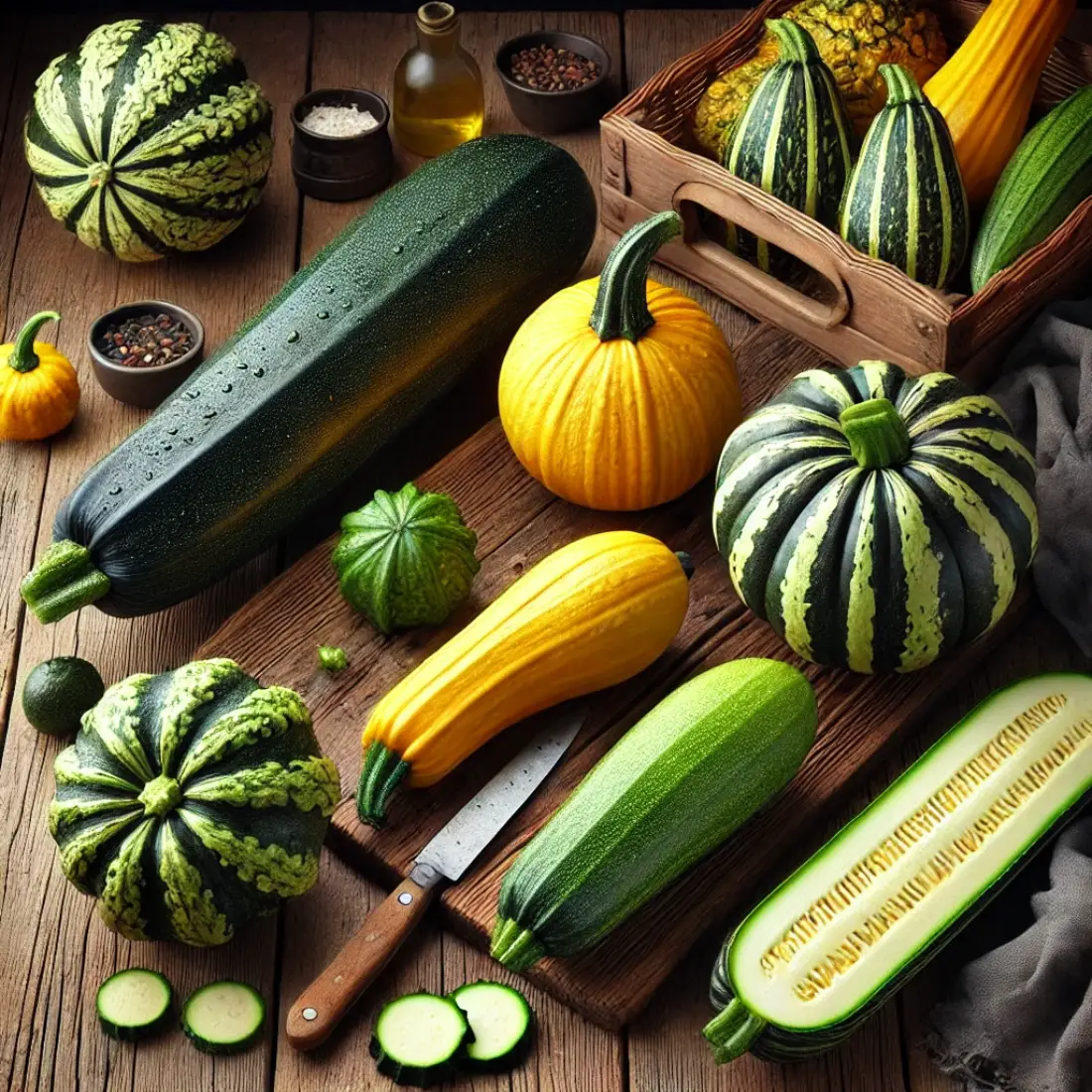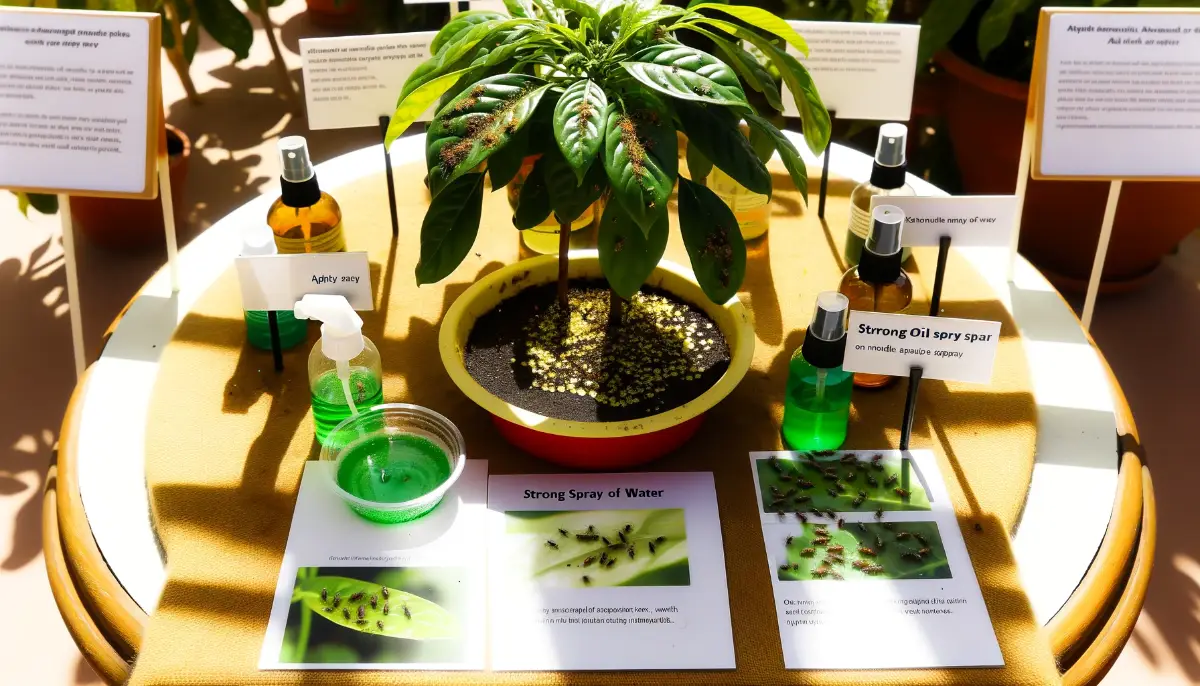Spinach is a nutrient-rich leafy green that’s easy to grow and essential for a healthy diet. Cultivating spinach organically ensures that it retains its full nutritional value without harmful chemicals, benefiting both your health and the environment.
Growing your own organic spinach not only provides you with fresh, delicious greens but also contributes to sustainable gardening practices.
Growing Spinach
Benefits of Growing Spinach Organically
Organic spinach is packed with essential vitamins and minerals, making it a powerhouse of nutrition. By growing spinach organically, you avoid synthetic pesticides and fertilizers, ensuring that the greens are free from harmful chemicals.
This practice not only promotes better health for you and your family but also supports environmental sustainability. Organic farming methods improve soil health, reduce pollution, and encourage biodiversity. Moreover, organic spinach tends to have a richer flavor compared to its conventionally grown counterparts, enhancing your culinary experiences.
Selecting the Right Spinach Variety
Choosing the right spinach variety is crucial for a successful organic garden. Popular varieties include Bloomsdale, known for its crinkled leaves and sweet taste, and Space, which is heat-tolerant and resistant to downy mildew.
Consider your local climate and soil type when selecting a variety. If you live in a cooler region, opt for varieties that thrive in lower temperatures. For warmer climates, heat-resistant types are ideal. Research each variety’s pest resistance to ensure a robust and healthy crop.

Preparing the Soil
Spinach thrives in well-draining, fertile soil rich in organic matter. Begin by testing your soil’s pH; spinach prefers a pH between 6.0 and 7.0. To enhance soil fertility, incorporate organic compost or aged manure into the soil before planting.
Compost not only enriches the soil with essential nutrients but also improves its texture and water-holding capacity. If your soil is heavy clay or sandy, amending it with organic matter will create a more conducive environment for spinach growth. Ensure the soil is loose and crumbly to promote root development and nutrient uptake.
Sowing Spinach Seeds
For a bountiful spinach harvest, timing is crucial. Sow spinach seeds in early spring or late summer, as the plant prefers cool weather. Direct sowing is the best method; plant seeds about ½ inch deep and 2 inches apart in rows spaced 12-18 inches apart.
To extend your harvest period, consider succession planting every two weeks. Ensure the soil remains consistently moist to encourage germination, which typically occurs within 7-14 days. Thin seedlings to 4-6 inches apart once they have a few true leaves to reduce competition for nutrients and space.
Watering and Irrigation
Consistent moisture is key to growing healthy spinach. Water the plants regularly, aiming for about 1-1.5 inches of water per week. It’s best to water early in the morning to minimize evaporation and allow leaves to dry before evening, reducing the risk of fungal diseases.
Using a soaker hose or drip irrigation system can help deliver water directly to the root zone, conserving water and minimizing leaf wetness. Avoid overwatering, as waterlogged soil can lead to root rot and other issues.
Mulching and Weed Control
Mulching is an effective organic practice to retain soil moisture, regulate temperature, and suppress weeds. Apply a layer of organic mulch, such as straw, shredded leaves, or grass clippings, around the spinach plants. This not only conserves moisture but also adds organic matter to the soil as it decomposes.
Regular weeding is essential, especially when the plants are young and more vulnerable to competition. Hand-pulling weeds or using a hoe can help maintain a weed-free bed without disturbing the spinach roots.
Organic Fertilization
Feeding your spinach plants with organic fertilizers ensures they receive essential nutrients without the harmful chemicals found in synthetic options. Organic fertilizers not only improve plant health but also enhance soil structure and microbial activity.
Types of Organic Fertilizers Suitable for Spinach:
- Compost: Rich in nutrients and beneficial microorganisms, compost is an excellent all-purpose organic fertilizer. Apply a 2-3 inch layer of well-rotted compost to the soil before planting and as a side dressing during the growing season.
- Aged Manure: Well-composted animal manure (such as cow, horse, or chicken) is high in nitrogen, which is vital for leafy green growth. Incorporate aged manure into the soil several weeks before planting to avoid burning the seedlings.
- Fish Emulsion: This liquid fertilizer provides a quick boost of nitrogen and other nutrients. Dilute according to package instructions and apply every 2-3 weeks during the growing season.
- Seaweed Extract: Seaweed is rich in trace minerals and growth hormones that promote healthy plant development. Use it as a foliar spray or soil drench, following the recommended dilution rates.
Application Methods and Timing:
- Before Planting: Mix compost or aged manure into the soil to a depth of 6-8 inches. This provides a nutrient-rich foundation for your spinach.
- Side Dressing: Once the spinach plants are established, side-dress with additional compost or organic fertilizer. Apply a thin layer around the base of the plants, taking care not to touch the leaves.
- Liquid Feeding: For a nutrient boost, use fish emulsion or seaweed extract every 2-3 weeks. Apply these fertilizers in the morning or late afternoon to minimize evaporation and maximize absorption.
Homemade Organic Fertilizer Recipes:
- Compost Tea: Steep compost in water for 24-48 hours, strain, and use the liquid to water your plants.
- Banana Peel Fertilizer: Soak banana peels in water for a few days and use the nutrient-rich liquid to water your spinach.
Harvesting Spinach
Knowing when and how to harvest spinach is crucial for enjoying the freshest, most nutritious leaves. Proper harvesting techniques also encourage continuous growth and extend your spinach season.
Signs of Readiness for Harvest: Spinach leaves are ready to harvest when they reach a size suitable for your needs, typically between 4-6 inches long. Baby spinach leaves are tender and ideal for salads, while larger leaves are perfect for cooking. Harvest before the plant starts bolting (flowering), which usually occurs as temperatures rise.
Best Harvesting Techniques:
Individual Leaf Harvesting: Using sharp scissors or garden shears, cut the outer leaves about 1 inch above the base of the plant. This method allows the inner leaves to continue growing, providing multiple harvests from each plant.
Whole Plant Harvesting: If you prefer a one-time harvest, pull the entire plant from the ground. This is often done when temperatures begin to climb, and the plant is likely to bolt soon.
Cut-and-Come-Again: For continuous harvest, use the cut-and-come-again method. Trim the leaves back to about 2 inches above the soil level. New leaves will sprout, giving you a second harvest.
Post-Harvest Handling and Storage:
- Cleaning: Rinse the spinach leaves thoroughly under cool running water to remove dirt and any insects. Pat them dry with a clean towel or use a salad spinner.
- Storage: Store spinach in the refrigerator in a plastic bag or container with a damp paper towel to maintain freshness. Properly stored, spinach can last up to a week.
- Freezing: For long-term storage, blanch spinach leaves in boiling water for 1-2 minutes, then immediately transfer them to ice water. Drain and pack the leaves into airtight containers or freezer bags.
Companion Planting
Companion planting is an organic gardening technique that involves growing different plants together to enhance growth, repel pests, and improve yields. For spinach, this method can lead to healthier plants and a more productive garden.
Beneficial Plants to Grow with Spinach:
Radishes: These quick-growing plants help loosen the soil around spinach roots and can attract pests away from spinach.
Strawberries: They create ground cover, helping to retain soil moisture and suppress weeds around spinach plants.
Carrots: These deep-rooted vegetables break up soil and improve aeration, which benefits spinach roots.
Peas and Beans: As legumes, they fix nitrogen in the soil, enriching it and promoting healthy spinach growth.
Plants to Avoid Near Spinach:
Potatoes: They can attract pests that also harm spinach, such as leaf miners and aphids.
Fennel: It secretes substances that inhibit spinach growth.
Onions and Garlic: These can stunt spinach growth due to allelopathy, where chemicals released by one plant affect another.
Organic Benefits of Companion Planting:
- Pest Control: Certain companion plants repel insects or attract beneficial predators.
- Soil Health: Companion plants can improve soil structure and nutrient availability.
- Increased Yield: Diverse plantings can lead to better utilization of garden space and resources, resulting in higher overall productivity.
Troubleshooting Common Problems
Growing spinach organically can sometimes present challenges. Knowing how to identify and address these common problems will help you maintain a healthy and productive garden.
1. Yellowing Leaves:
- Cause: Often a sign of nitrogen deficiency or water stress.
- Solution: Ensure consistent watering and amend the soil with organic nitrogen-rich fertilizers like compost or aged manure.
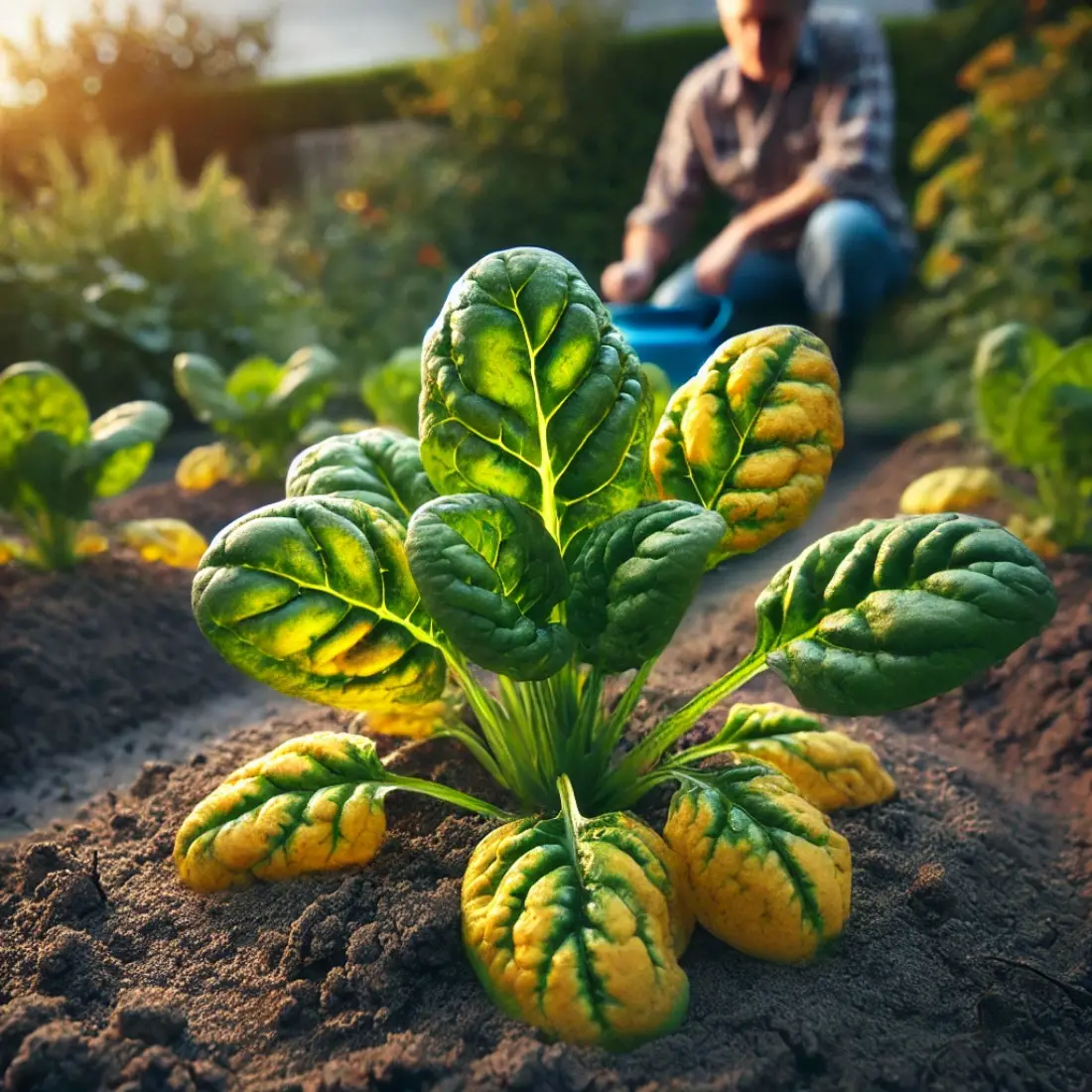
2. Bolting (Premature Flowering):
- Cause: Warm temperatures or long daylight hours.
- Solution: Plant spinach early in spring or late in summer to avoid hot weather. Choose bolt-resistant varieties and provide shade during hotter days.
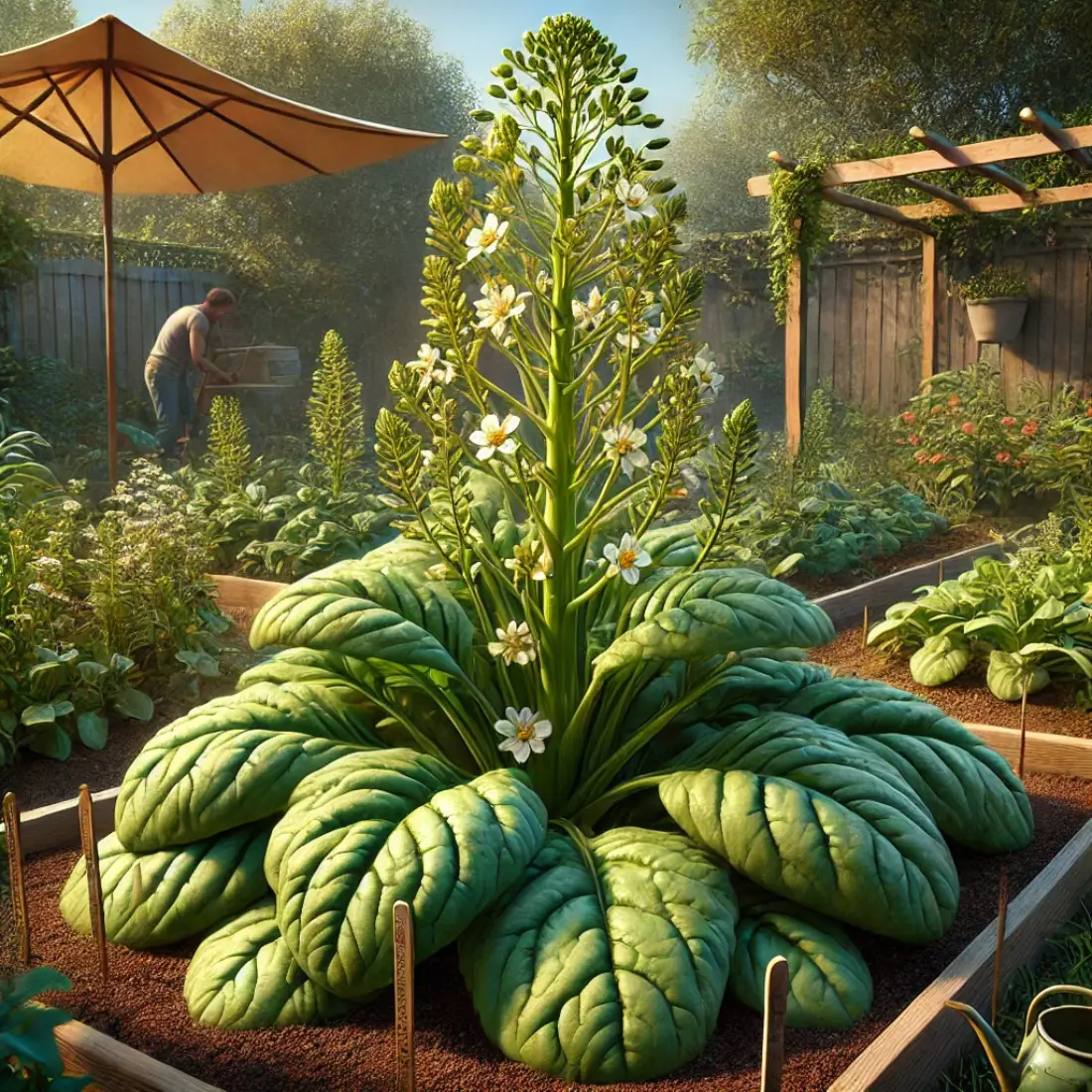
3. Poor Germination:
- Cause: Soil temperature too high or low, or seeds planted too deep.
- Solution: Ensure soil temperatures are between 45-68°F for optimal germination. Plant seeds no deeper than ½ inch.
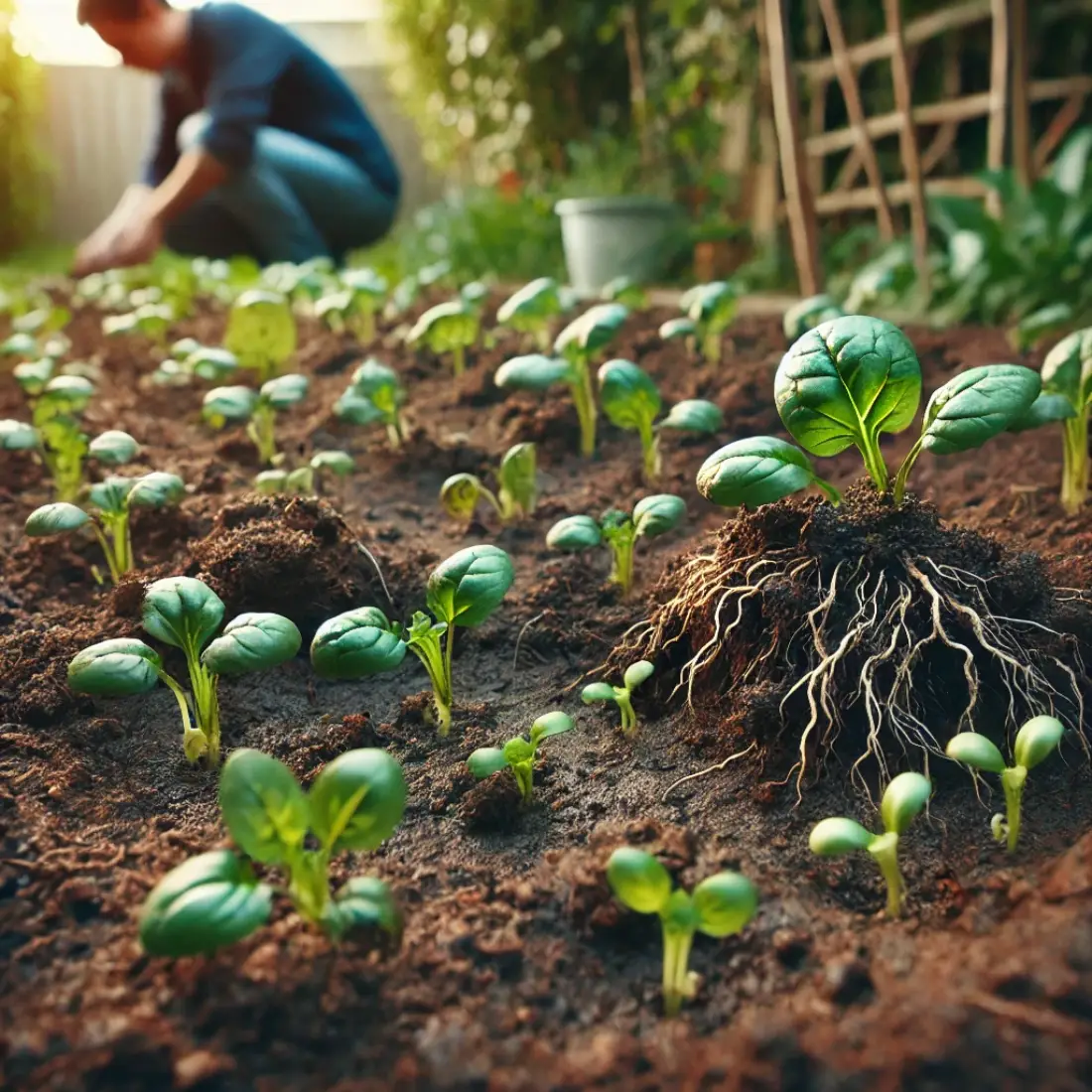
4. Wilting Plants:
- Cause: Overwatering, underwatering, or root rot.
- Solution: Maintain consistent moisture levels without waterlogging. Improve soil drainage and avoid overhead watering.
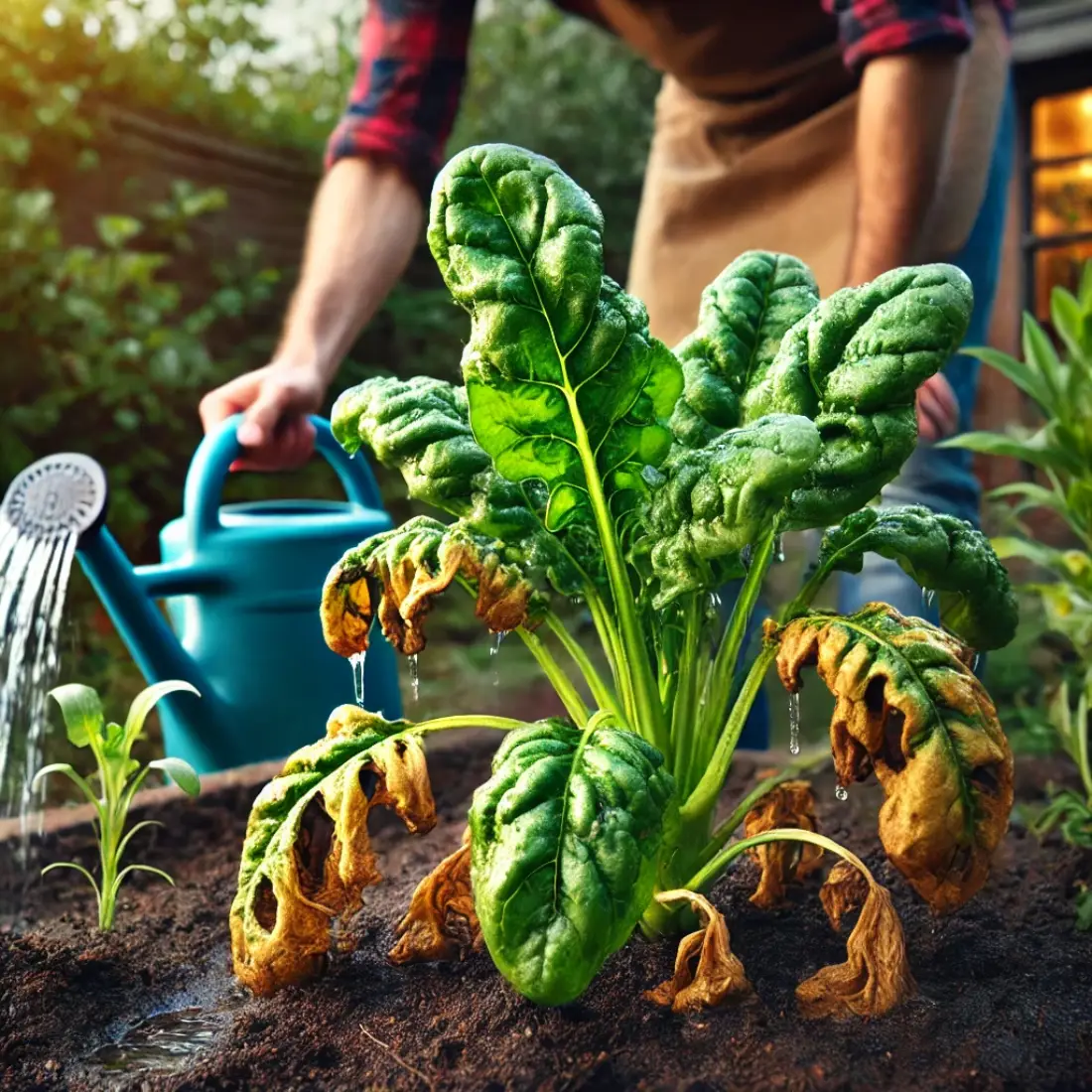
5. Slow Growth:
- Cause: Nutrient deficiency or poor soil conditions.
- Solution: Test soil and amend it with organic matter, ensuring it has the right pH and nutrient levels.
Pest and Disease Management
Maintaining a healthy, organic spinach crop requires effective pest and disease management. Using organic methods not only keeps your spinach free of harmful chemicals but also promotes a balanced ecosystem in your garden.
Common Pests Affecting Spinach:
Aphids: These tiny insects suck sap from spinach leaves, causing them to curl and distort. They can also transmit diseases.
Leaf Miners: These pests tunnel through leaves, leaving unsightly trails and weakening the plant.
Slugs and Snails: These mollusks feed on spinach leaves, leaving large holes and ragged edges.
Flea Beetles: These small, jumping beetles create tiny holes in leaves, giving them a “shotgun” appearance.
Organic Pest Control Methods:
- Beneficial Insects: Introduce ladybugs, lacewings, and parasitic wasps to your garden to naturally control aphids and other pests.
- Neem Oil: This natural insecticide disrupts pest life cycles. Apply neem oil every 7-10 days, ensuring thorough coverage.
- Diatomaceous Earth: Sprinkle this natural powder around plants to deter slugs, snails, and flea beetles. The sharp particles damage pests’ exoskeletons, leading to dehydration.
- Hand-Picking: Regularly inspect your spinach plants and manually remove slugs, snails, and large pests.
- Row Covers: Use floating row covers to physically block pests from reaching your plants, especially early in the season.
Managing Diseases Organically:
Downy Mildew: This fungal disease appears as yellow spots on the upper leaf surfaces and white, fluffy growth underneath. Prevent it by ensuring good air circulation and avoiding overhead watering.
Fusarium Wilt: This soil-borne fungus causes wilting and yellowing of leaves. Use disease-resistant varieties and practice crop rotation to prevent buildup in the soil.
Damping-Off: This disease affects seedlings, causing them to rot at the soil line. Use sterile seed-starting mixes and avoid overwatering to prevent this issue.
Organic Disease Control Methods:
- Crop Rotation: Rotate spinach with non-host crops (e.g., tomatoes, beans) to reduce disease buildup in the soil.
- Proper Spacing: Plant spinach with enough space to ensure good air circulation, reducing the likelihood of fungal diseases.
- Compost Tea: Use compost tea as a foliar spray to boost plant immunity and reduce disease incidence.
FAQs about Growing Spinach
How often should I water spinach?
Spinach requires consistent moisture for optimal growth. Aim to water the plants about 1-1.5 inches per week. It’s best to water early in the morning to minimize evaporation and allow leaves to dry before evening, reducing the risk of fungal diseases.
What are the best organic fertilizers for spinach?
Compost, aged manure, fish emulsion, and seaweed extract are excellent organic fertilizers for spinach. These options provide essential nutrients and improve soil health without harmful chemicals.
How can I prevent pests organically?
To prevent pests organically, introduce beneficial insects like ladybugs and lacewings, use neem oil or insecticidal soap, and apply diatomaceous earth around the plants. Regularly inspect your spinach and hand-pick any visible pests.
When is the best time to plant spinach?
The best time to plant spinach is in early spring or late summer when temperatures are cool. Spinach thrives in temperatures between 45-75°F. Succession planting every two weeks can extend the harvest season.
How do I know when my spinach is ready to harvest?
Spinach is ready to harvest when the leaves reach 4-6 inches in length. Harvest before the plant starts bolting (flowering), which usually occurs as temperatures rise. Baby spinach leaves are tender and great for salads, while larger leaves are ideal for cooking.
Can I grow spinach in containers?
Yes, spinach can be successfully grown in containers. Choose a container that is at least 6-8 inches deep, fill it with high-quality organic potting mix, and ensure it has good drainage. Water regularly and provide adequate sunlight.
What should I do if my spinach bolts?
If your spinach bolts, remove the flowering stalks and harvest any remaining leaves. Bolting occurs due to warm temperatures or long daylight hours. To prevent bolting, plant spinach in early spring or late summer and choose bolt-resistant varieties.
How do I improve soil for spinach?
Improve soil for spinach by adding organic matter such as compost or aged manure. Ensure the soil has good drainage and a pH between 6.0 and 7.0. Regularly amend the soil with organic fertilizers to maintain nutrient levels.
What is the best way to store harvested spinach?
Store harvested spinach in the refrigerator in a plastic bag or container with a damp paper towel to maintain freshness. Properly stored, spinach can last up to a week. For long-term storage, blanch the leaves in boiling water for 1-2 minutes, then freeze them.
How can I prevent fungal diseases in spinach?
To prevent fungal diseases, ensure good air circulation by spacing plants properly and avoid overhead watering. Water early in the morning to allow leaves to dry before evening. Remove any affected leaves promptly and use compost tea as a foliar spray to boost plant immunity.


